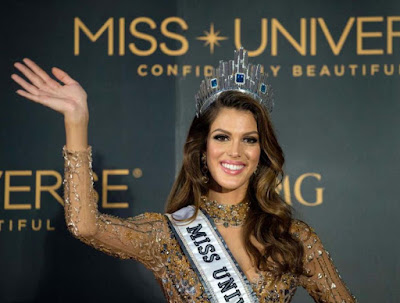Sex In Perplexing Times
At 176 pages, Making Love Just: Sexual Ethics For Perplexing Times (Fortress Press Ebook, 2012) by Marvin M. Ellison takes us through the history and culture of sex and sexual ethics mainly through the filter of Christianity and western thought and ideas. What follows after is a succinct yet detailed “ethical inquiry into sex and sexual values.” Ellison wants to ask “perplexing, even discomforting questions.”
He begins, as many books do in this area of discussion, with describing how sex is treated as a problem. The question must be asked: why is sex a problem? Ellison uses the same wide brush to paint man as the dominant over the female submissive as other writers on this topic do, and this runs the risk of stereotyping. Not all men are rapists; not all men use sex as a weapon. While true that this occurs all too frequently in our world, and major adjustments in thinking are critical, we have to be careful about the tendency to lump people together by race, sex, or what seems to be common behavior. Ellison says that “Guilt, shame, and repression mark the dominant Christian tradition’s moral response to sexuality,” and he attributes this to the “Constantinian establishment” and its views on “pelvic philosophy” and need for “sexual control.”
One cannot escape the basic human design of men as penetrators and women as the penetrated. This does not mean that all men take by force to fulfill sexual needs or use sex as a weapon against a perceived weaker person. To change the perspective and move beyond the physical constructs, the thinking must change. The philosophy must change to mutual sexual power-sharing. What is even more true is that the Church hierarchy must surrender the need to control what happens in the bedroom. Ellison quotes Catholic theologian Daniel Maguire who observed “that the church turned increasingly to sex in order to define both orthodoxy and clerical authority” after the Council of Elvira in 309 CE and therefore, he labeled this response the “Elvira syndrome.” This imperial approach relies on the past to dictate moral truth, renders this truth in the abstract, and fosters deep suspicion of advocates who suggest other views. Ellison asserts that “sexual justice requires recognition of and respect for sexual difference.” He goes on to suggest there are more important topics within sexual ethics to focus on, namely race, gender, sexual and economic oppression and sexual violence, and this book gives ample space to each of those concerns.
Along the way, Ellison delineates the common unreasonable and unfounded sexual views in our society and culture, such as the racist misconceptions of blacks and their sexual behavior as animalistic. The discomfort American society has with inter-racial marriage and black sexual stereotypes continues today, although significant gains have been made to dispel and one day eliminate these erroneous, harmful ideas. Sexual stereotypes also exist for the disabled and mentally handicapped. It seems difference is what upsets the recognized view of what is sexual and acceptable to society. This must change, as Ellison makes clear, namely because sexuality and gender are fluid in our society and culture today. Ideas of beauty and sexual behavior are also in flux. Old views, misperceptions and stereotypes no longer have a place in our modern world.
But the question must be asked, who controls sexual justice? Who is it, exactly, that has to change? Church? Culture? Society? Ellison points to those who commonly wield the dominant sexual power: white males. This reflects the patriarchal notions of Christian tradition as well. For those who are not white males, victimization and vulnerability are the burden they must carry in the sexual arena. I agree with Ellison that the white male hierarchy and the Church must divest power while shifting focus to more democratic sex norms. These normative relations must be equally shared with women, gays, lesbians, transgender and queer individuals as well as with people of all races and economic levels. All must share in the sexual power norms for society to be truly just and equal in sexual ethics and behavior. Is this even possible? We do not have the luxury of the question. It simply must be. We must lose the guilt, we must end the ostracizing of the Other, and most importantly, end rape culture. The term “rape” is now used for humor by comedians and in social media. It is a buzzword in society, thrown about without consideration, and when words are used so callously, they lose their power. Rape is rape and nothing to laugh at or take lightly. In the end, though, we must change white male entitlement in the sexual arena. The forces that work for change are outside forces, argues Ellison, consisting of social and natural sciences and embodied in the social justice movement.
Ellison takes us through a history of sexual ethics as a sociological and cultural force. He includes both modern, historical and scientific views, and details how these areas interconnect with each other. His keyword is empowerment—who is empowered in sexual behavior, and how do we empower all people to take control, indeed, exercise their human right to control their own sexuality? He traces the linage of sexual mores, different from sexual morals, back to Augustine and the Church father’s pro-marriage yet sex-negative position. Augustine encourages husbands and wives to quit being sexual once they are out of their “youthful passions.” This is absolutely ridiculous. Part of the partnership found in marriage is to become one, which means the joining of two bodies both physically and spiritually. This is what is meant by sexual congress within marriage and it is for life. It is well within the purview of the married couple, although it should not be weighted more heavily for the male need over the female. Ellison quotes Mark Jordan, who is himself commenting on Augustine’s view, that Christian marriage theology promotes sex without eroticism. This seems disingenuous to me as a concept; there is more eroticism in the Church mystics and the mortification of the flesh than in the sexual joining within marriage. Sex in a marriage is a life-long joining of two in one; it should never be relegated to “shameful and youthful excess.”
Ellison presents a more inclusive and democratized view of sexual behavior and ethics. Any discussion of modern sexual ethics must include the LGBTQ community, divorced people, those who use birth control or who have had abortions, etc. Even the “conventional ethic of ‘celibacy for singles’” is no longer viable. He goes on to argue for broadening “access to marriage rights, benefits, and responsibilities” especially to acknowledge “the humanity of gay persons.” To do this, we must decenter marriage and heterosexuality. “In the midst of this cultural crisis,” he writes, “ the Right has cruelly played the race card and the sex/gender card, again and again, to scapegoat vulnerable groups and divert attention from the real source of our cultural woes, runaway capitalism and the collapse of democracy.” Is this not our current Republican presidential contest for the 2016 nomination in a nutshell? The sexual innuendo in the last debate alone represents centuries of white male stereotypes and preoccupation with genital size. This is where Ellison’s wide brush is appropriate.
By far, the most interesting part of the book for me is the statistics on the use of birth control, especially abortion among Catholic women. This area is most problematic for the Church. The spreading Zika virus has again, like in the cases of Ebola and HIV/AIDS, raised the question of using condoms to save lives among an infected and at risk population. The bishops of the Church insist no exceptions will be allowed, but the pope seems, in informal statements, to go against that position. In any case, the official word is not clear, and lives are at stake. In the book, though, Ellison makes it clear the Church has a problem with using birth control to do what it is designed to do: allow a woman to control her own reproductive capability. This is a problem that will not go away. It is clear from the statistics that Catholics are not following the Church in this area. The question remains: how does the Church support women who exercise their reproductive rights while also opening the doors to the LGBTQ community whose members now sit in their pews each Sunday and who register their children in Catholic schools and institutions? Ellison gives a potent and spot-on answer: “Theological insight and ethical wisdom must adapt and change in order for Christianity to remain a dynamic, living tradition that can address real life in a constructive rather than reactive manner.” That is, in a nutshell, a critical need in 21st century Christian sexual ethics.




Comments
Post a Comment